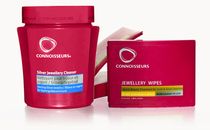
14-03-17
Our Andrew McCallum range has been restocked and more designs will be added soon.
10-03-17
Earrings from Scottish Designer Clare Hawley now available!
23-01-17
More exciting designs of Scottish Designer Jewellery coming soon
12-01-17
Bigger choice and more categories now available.
We have now Gemstone Jewellery too!
23-12-16
JAREEYA is an Assay Assured Retailer
19-12-16
JAREEYA® is a registered Trademark in the UK
17-11-16
Pearl earrings now available

Useful Information
SSL Secured Buying

Changed Your Mind?
No Problem!

Fulfilling the Highest Standards

Colour Grading of Diamonds
Apart from a diamond's clarity, great attention is given to its colour and it is one of the 4Cs. Except in the case of fancy coloured diamonds, the ideal stone is clear without any tint or hint of colour. Such diamonds are however very rare and most diamonds have a yellow tone to them.
Grading diamonds for colour is not an exact science. It is normally done by comparing a given stone with a set of master stones. If a diamond shows less yellow than the master stone of a given colour grade, then the diamond moves up in the grading and is compared to the next stone and so on.
The colour grade for diamond used letters and ranges from D to Z, where D is a colourless diamond and the higher you move up the alphabet, the more yellowish the stone becomes. Curiously, the letters A-C are not in use. When the grading system was introduced, those letters were reserved in case diamonds were ever to be found with superior colour than D-graded ones. Since a diamond with a colour grade of D is already as colourless as it gets, those letters will most likely never see their use, except perhaps in fraudulent activities.
While the methodology of comparing a diamond to a master stone seems easy, it does require skill and still suffers from subjective perception, especially for colours that are borderline. You therefore sometimes see that a diamond is given two grades, for example H/I if the stone is difficult to be definitely classified as either H or I colour.
The colour grades can be grouped together:
| D-F | Colourless | G-J | Near Colourless | K-M | Faint Yellow | N-R | Very Light Yellow | S-Z | Light Yellow |
| Z+ | Fancy Yellow |
When grading diamonds for their colour, the most important factor is lighting. A high-quality light source that emits a good white light, similar to that of sunlight at noon, is required. Using the wrong type of light can introduce perception of colour when there is none. When buying a diamond, it is best observed under either specialist lighting, with the light coming overhead or using natural daylight around noon, but avoiding direct sunshine. If a diamond is inspected in the morning or evening hours, the spectrum is shifted towards the red and this makes a diamond appear yellowish / reddish even though it would be clear at hours when the sun stands high. The human eye is very adaptable and you may not even notice the rather poor daylight in the early or late hours.
Most light sources at home are not suitable for diamond grading as their colour temperature is either too low or too high. Daylight has a colour temperature of around 5500 – 6500 K (K stands for Kelvin, a unit of measurement for temperature). Most household lights are "warm", giving a yellowish hue. Office lighting in contrast often uses "cool" light which is bluish-white. The colour temperature of a light has nothing to do with its temperature: a 5500 K light source is not 5500 K (or around 5230°C) hot – any material would melt at such temperatures. Thus, a high-quality lamp for grading diamonds is a must.
(For the scientifically interested person: Colour temperature corresponds to the radiation (light) sent off by an ideal black body radiator at a given temperature. At around 2000K it would glow orange-red; at 5500K it would give off light that is similar to broad daylight and at even higher temperatures the colour would get more and more blue).
Colour grading of diamond only works for loose stones. Once a diamond is set in jewellery, its perceived colour is changed. A colourless diamond is a waste of money when set in a yellow gold mounting as it inevitably picks up some yellow from the surrounding gold.
In terms of prices, D-coloured diamonds are by far the most expensive diamonds, except for some fancy colours. It can save a lot of money to settle on an E- or F-coloured diamond instead and the difference is not noticable, unless two stones are compared side by side.
Diamonds of colour grades U-Z have a very noticeable yellow tone but they are not considered fancy yellow. Fancy coloured diamonds, including yellow ones, are not graded by the colour grading scheme of the 4Cs.
Since the 4Cs system was developed by GIA (Gemological Institute of America) the above mentioned colour scheme was developed by the same institute and is now the most widely used. Other gemmological institutes developed their own colour grading systems, using numbers or words instead of letters to avoid confusion.
Further Reading
We have just learnt about how the colour of "colourless" diamonds is assessed. You can learn more about the other topics of the 4Cs or go to their overview by clicking on the links below:


